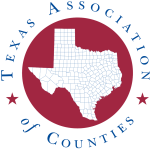News Article | December 15, 2022
Lawmakers Adopt Growth Rate for Texas Budget Spending Limits
State budget writers will have up to $114.1 billion to spend in tax revenue not dedicated by the Texas Constitution in the upcoming two-year budget.
On Nov. 30, the Texas Legislative Budget Board (LBB) – a panel of legislators led by Lt. Gov. Dan Patrick and Speaker of the House Dade Phelan – adopted a growth rate of 12.33% for each of the following Texas spending limits.
- The state’s Tax Spending Limit caps increases in appropriations from tax revenue not dedicated by the state constitution to growth in the Texas economy. The Legislature can exceed this limit with a simple majority vote in both chambers.
- The Consolidated General Revenue Appropriations (CGR) Limit is a new limit established by SB 1336 by Sen. Kelly Hancock (R-North Richland Hills) that first applies to 2024-25 appropriations. The CGR limits growth in appropriations from General Revenue-Related funds to the estimated compounded growth in population and inflation during the current and upcoming fiscal biennium. The CGR limit applies to a greater proportion of appropriations than the tax spending limit, but does not apply to appropriations for property tax relief or for the recovery costs of a disaster declared by the Governor. The latter provision would exempt state expenditures for border security from the limit. To exceed the CGR limit, a supermajority vote of three-fifths of each chamber is required.
Applying the adopted growth rate to the Tax Spending Limit allows for a $12.5 billion appropriations increase from non-dedicated tax revenue above the current two-year budget. The CGR limit provides for an even greater appropriations increase in General Revenue funds subject to the new limit of $15 billion above 2022-23 budgeted amounts. When comparing spending limits, the limit that provides the lower spending cap is the controlling limit. Accordingly, the Tax Spending Limit will be the controlling limit when the Legislature convenes Jan. 10. State lawmakers may vote to exceed this limit during the session. Also, the $114.1 billion spending cap will increase when lawmakers enact a supplemental appropriations bill for the current 2022-23 budget. But for now, this is the initial spending cap for the 2024-25 appropriations bill.
The table below shows the current estimate of how much lawmakers are authorized to spend under each limit.
|
Spending Caps – 2024-25 Biennium
(12.33% Adopted Growth Rate)
|
|||
| Spending Limit | Current Budget 2022-23 Appropriations | Maximum Amount of 2024-25 Appropriations | Biennial Appropriations Increase |
| Tax revenues not dedicated by the Texas Constitution – controlling limit | $101,582,185,996 | $114,107,269,529 | $12,525,083,533 |
| Consolidated General Revenue | $121,000,192,084 | $135,919,515,768 | $14,919,323,684 |
| Source: Legislative Budget Board – Motion Adopted by the LBB on Nov. 30, 2022 | |||
Neither of these initial estimates of spending capacity allows lawmakers to fully expend the $27 billion surplus that Comptroller Glenn Hegar projects for the end of the 2022-23 biennium – leaving as much as $14.5 billion of the surplus unspent. This number could become even larger in January when Hegar releases the Biennial Revenue Estimate for the 2024-25 biennium. The Biennial Revenue Estimate projects all available revenue for the 2024-25 biennium and serves as the "Pay-as-you-go Limit." This spending limit prohibits state lawmakers from spending in excess of available revenue without four-fifths of House and Senate members voting to exceed the limit.
Each session, lawmakers adopt a supplemental appropriations bill for the current budget to capture cost savings and fund shortfalls, typically increased Medicaid costs due to enrollment levels or changes in the Federal Medical Assistance Percentage. Both adopted limits will increase by the amount of revenue subject to each limit included in the supplemental appropriations bill for the current two-year budget. Occasionally the supplemental bill provides one-time funding for priority projects such as state hospital construction or funding for the County Transportation Infrastructure Program. In addition, updated revenue figures from the Comptroller may result in changes in spending levels and methods of finance.
The next significant steps in the state budget process are the release of the Biennial Revenue Estimate and the initial budget recommendations by each chamber in January. For more on the state budget process, contact your legislative consultant or Zelma Smith.

